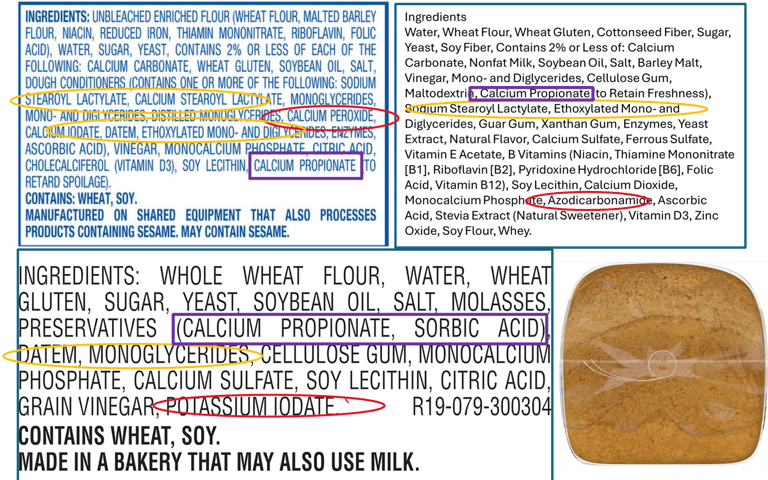
Baking Enzyme Series 3: glucose oxidases and lipases
Glucose oxidase and lipase are functional enzymes used in baking to improve dough performance and support clean-label formulations.
2 min read


In baking, amylase and protease are widely recognized as the top two most popular enzymes, each playing a distinct role in dough characteristics and product quality. Opinions may vary regarding the third most popular enzyme, with some identifying lipase and others selecting glucose oxidase. Both enzymes are set to grow quickly in wake of better-for-you bakery trends that call for the removal of artificial additives.
Artificial oxidizing agents and glucose oxidase
Azodicarbonamide (ADA) is a synthetic chemical compound used as a dough conditioner and oxidizing agent. While the FDA approves its use, it is banned in Europe and Australia due to carcinogenic risks when baked. Though most bakeries have phased out ADA, it remains in some Wonder brands bread. Other synthetic oxidizers used in baked goods, such as Bimbo Bakeries USA Sara Lee bread, include potassium bromate, potassium/calcium iodate and sodium/calcium peroxide.
Glucose oxidase is gaining traction as a favorable clean label alternative to those traditional artificial oxidizing agents in baking. This enzyme catalyzes the oxidation of glucose to gluconic acid and hydrogen peroxide, which helps strengthen the dough and improve its stability and shelf-life.
Artificial emulsifiers and lipase
Artificial emulsifiers are widely used in the baking industry to improve the texture, volume, and shelf-life of baked goods. These compounds, such as mono- and diglycerides (MDG), DATEM, sodium stearoyl lactylate and polysorbates, work by stabilizing the mixture of ingredients, ensuring that oil and water components blend smoothly, which results in a uniform dough and a final product with enhanced softness and mouthfeel.
However, with the growing consumer demand for cleaner labels and more natural ingredients, the industry is shifting towards natural alternatives, such as lecithin and lysolecithin. Not too many know that enzymes, such as lipase, offer efficient alternatives to traditional artificial emulsifiers.
Some notes about lecithin: Lecithin generally has a low HLB value (4-7), suitable for water-in-oil emulsion and a natural alternative to MDG (mono- and diglycerides). Its derivative lysolecithin has high HLB value (9-12), good for oil-in-water emulsion and replacing DATEM. Because lecithin is a complex mixture of phospholipids, so not all lecithin/lysolecithin are created equally and perform the same. High level of expertise is required for successful formulation.
Phospholipase, a specific type of lipase, is particularly effective. This enzyme not only breaks down fats but also modifies the structure of phospholipids within the dough, resulting in improved dough handling, enhanced volume, and a finer crumb structure.
Both enzymes help bakers meet market demands on clean label ingredients while maintaining high-quality standards. If you want to learn more about enzymes that could help improve the quality of your baking goods, please feel free to reach out.
It is worth pointing out that an artificial preservative, calcium propionate, appears in most commercial breads. It can be easily replaced by cultured dextrose or cultured wheat flour.

